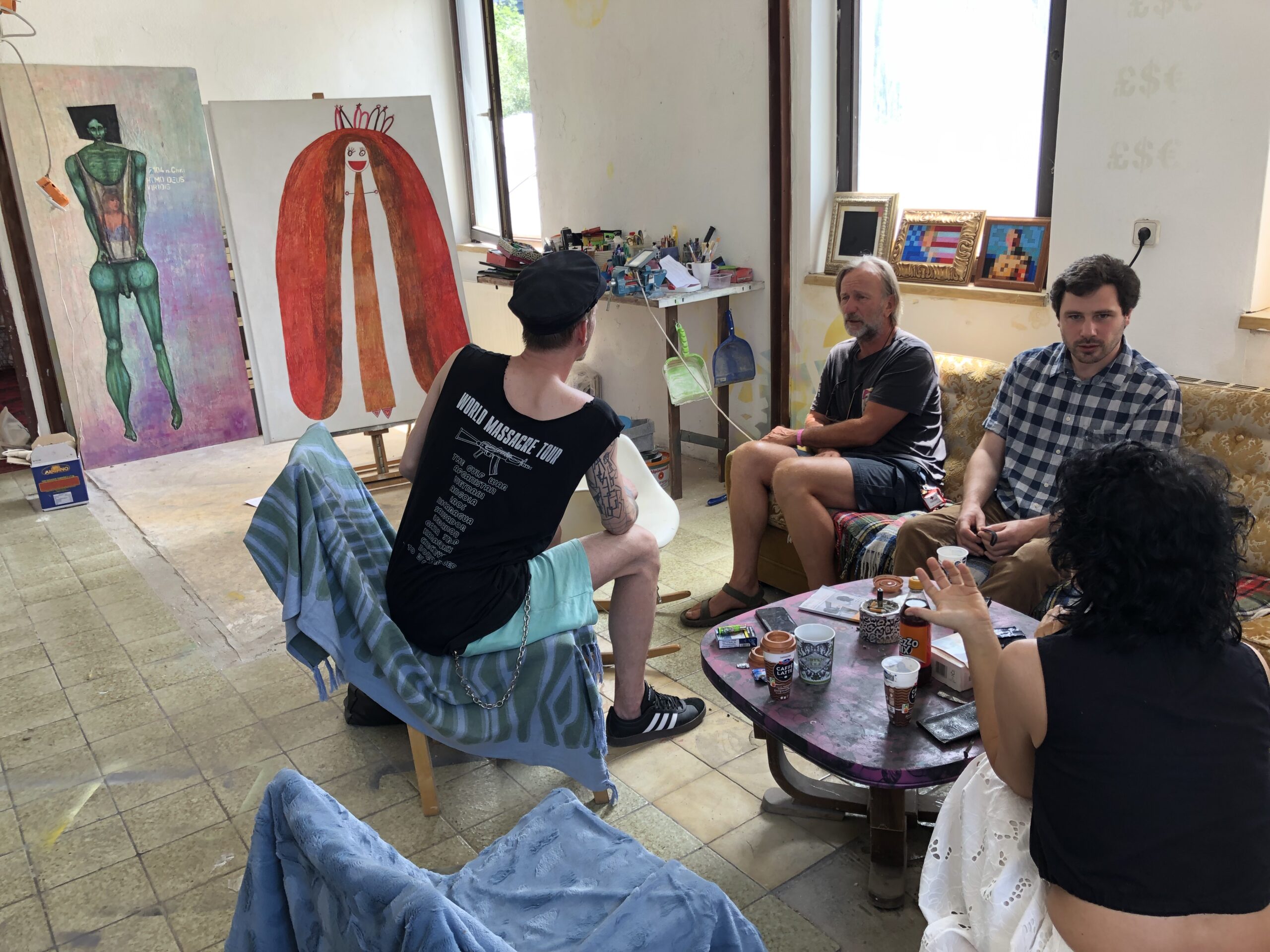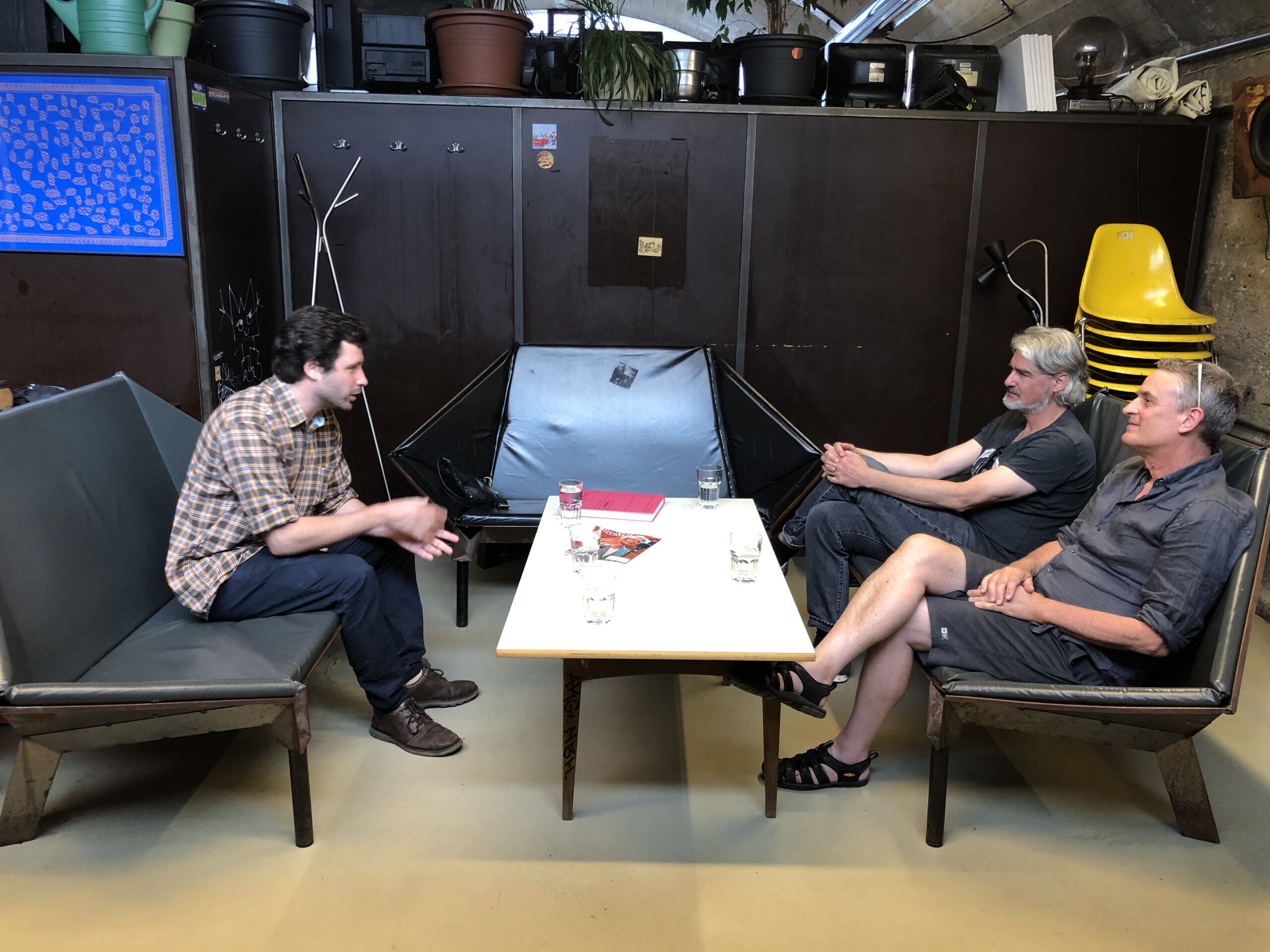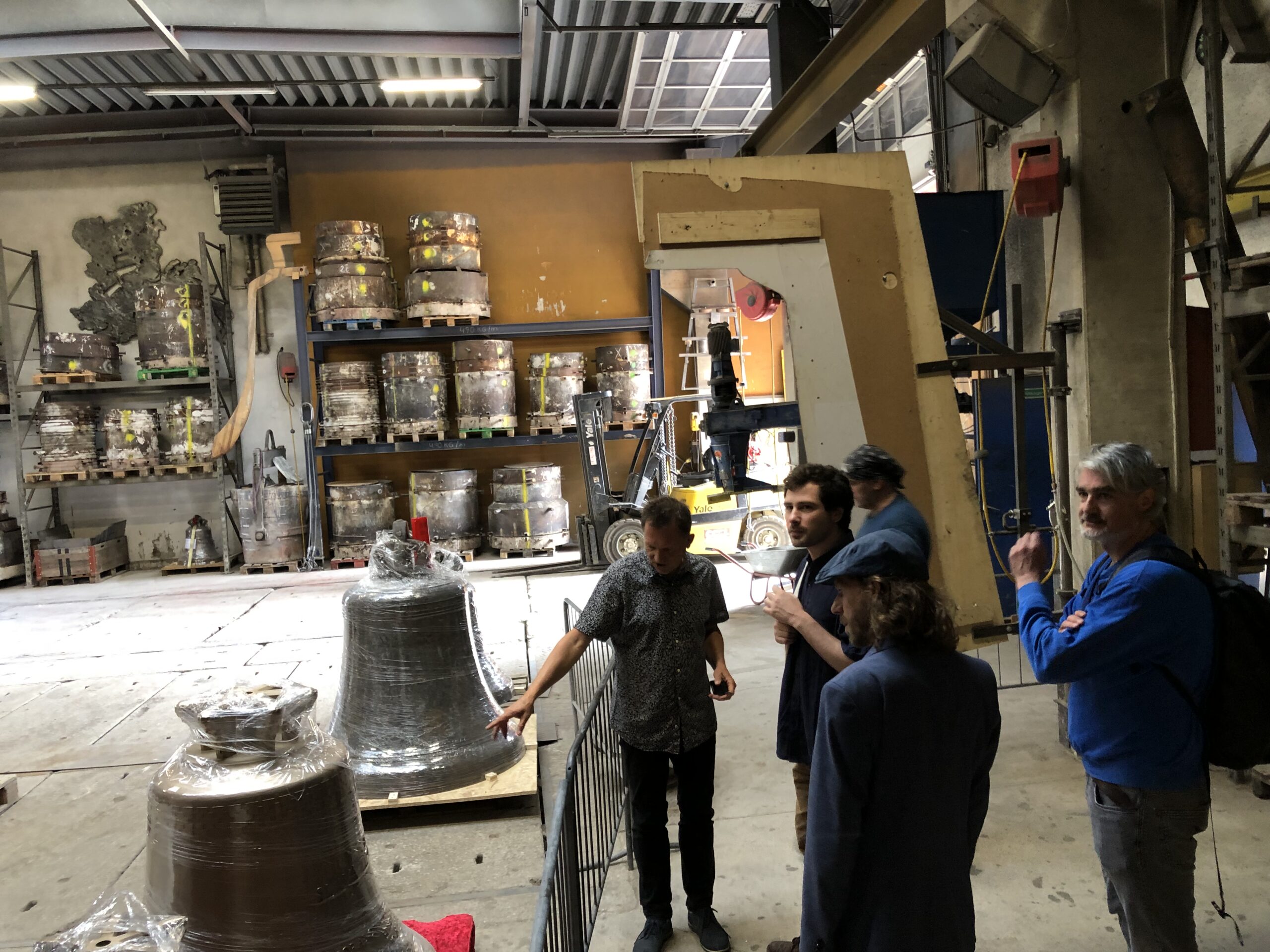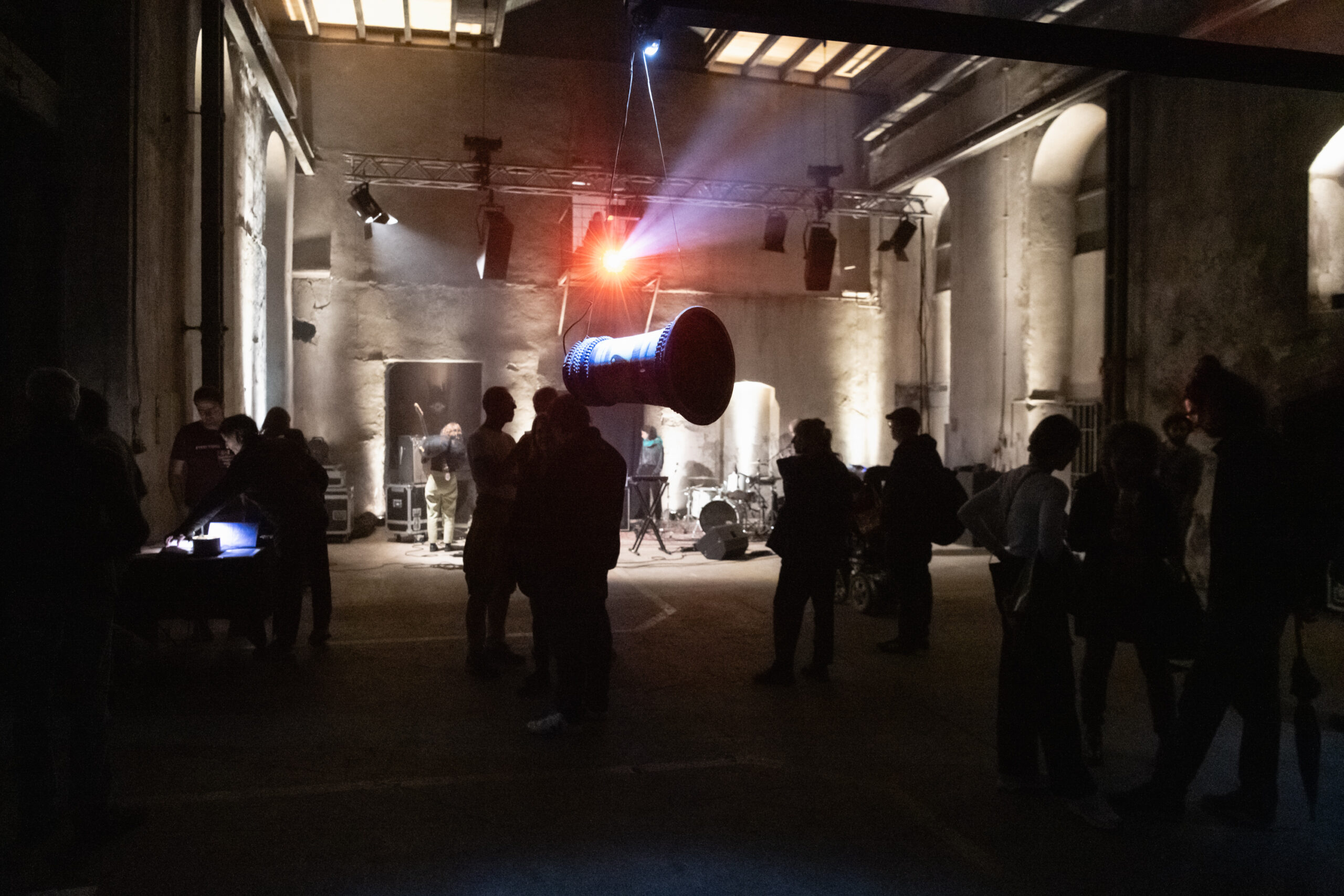Hello Danijela! Could you please introduce yourself and Openspace?
My name is Danijela Oberhofer Tonković. I am a cultural manager, curator, and producer, working independently for many years. I moved to Innsbruck in 2012, and in 2018, I began collaborating with Openspace, where Charly Walter is the director. He became my partner in European projects, and together we implemented Creative Europe projects, including Slash Transition project.
Originally from Croatia, my background is in the music industry there, where I’ve worked with sound artists and organized cross-disciplinary cultural and art projects. Sound has been a consistent part of my work, not just in traditional concerts, but as part of multi-disciplinary and trans-disciplinary collaborations.
Openspace is located in the Wilten neighborhood, it’s a versatile 80-square-meter space used for co-working, workstations, and events such as concerts, lectures, and exhibitions. Since 2018, we have also hosted residencies focused on local stories, public spaces, and the area’s transformation.
What is unique about your neighborhood in cultural and artistic terms?
Wilten, which predates Innsbruck and was established during Roman times, is now a district outside the city center. It’s a place in constant transition, with shops regularly closing and opening, a trend seen in many places around the world. Big stores push out smaller ones, and long-standing businesses give way to fresh concepts. Innsbruck has never been a large industrial city; it has always been more focused on trade and tourism, being situated at the border between two major empires. Wilten, however, has always had a manufacturing background, with places like the St. Bartlmä area playing a central role in its industrial history. Over the last 30-40 years, it has become a multicultural hub, home to people from all over the world, with a lively and diverse community.

How does your venue fit into this local ecosystem?
Openspace, active since 2012, is located in the heart of a large social block surrounded by apartments. The mission of Openspace is to provide a venue for everyday art and culture, offering workshops for all ages, from children to the elderly. It hosts various events, from political discourse and readings to artistic workshops for youth and graffiti artists. The space remains open and inclusive, fostering creativity in the community.
What were the motivations for embarking on the Slash Transition project?
Slash transition brings valuable opportunities such as networking, forming alliances, gaining new knowledge, and, of course, establishing a stronger local or national presence. The project aligns well with the topics we often explore at Openspace, especially the concept of spaces in between and the importance of smooth transitions, which we’ve been working on through previous European collaborations.
Additionally, Innsbruck and Tbilisi are twin cities. We wanted to enrich the collaboration and create more opportunities for the twin cities office to strengthen this connection. Inviting an artist from Tbilisi, like Giorgi, was an important step in this effort.
Who were the members of your local hub, how was it mixed and how did you choose them?
Our local hub was a bit different from other hubs because we didn’t have the project confirmed, and we weren’t sure if it would happen. That’s why we didn’t hold large hub meetings, as we weren’t sure if the project would go forward. Once Giorgi arrived, he met everyone individually, and each person gave their input, or there were smaller exchanges, but never a big group all at once.
If you look at a map of Wilten, when you walk from Openspace to the St. Bartlmä area, you pass by several organizations that we invited to join into the discussion. We invited Chris Kubrick, the former director of the Heart of Noise Festival [the Austrian partner at the beginning, who had to stop the project and was replaced by Openspace], who became a mentor and a regular exchange partner. We also invited experts from the local architect community, which is also a record label and home to musicians—such as Columbosnext and Verschubu Records. We also approached two festivals: the Positive Futures Festival, organized by Martin Bleicher, and the Klangspuren Festival, directed by Christoph Dienz. Then there’s the bells factory which is on the half way from Openspace to St. Bartlmä. Since 1599, the GRASSMAYR bell foundry has been casting bells. For over 400 years, the mysterious sound of the bells has shaped Austria’s oldest family business, now run by Johannes Grassmayer, who brings both great expertise and a historical perspective on the district.
The final performance took place at Factory Hall 6, in the St. Bartlmä industrial area, where we collaborated with a 3D printing studio, a collective focused on digitising craft, various artists, architects, VJs, producers and ceramics experts. We also met a few times with professors from the university: one specialized in guitar and literature, and the other in traditional ethnic instruments. So, it was a mix of architects, urbanists, artists, and music producers.

What themes did you present to the artist-in-residence and how did the artist, Giorgi Koberidze, address the local hub's reflections?
During the study visit, we introduced Giorgi to Innsbruck and then to Wilten, where he met local residents, manufacturers, architects, and members of the Bell Factory. Together, we decided to focus on St. Bartlmä, which is an area in transition. Once home to a big machine factory, many of the spaces remained empty for years until a group of architects—who are also artists and cultural producers—began renting them. Over the past years, they’ve fostered a vibrant creative community, creating diverse programs and hosting a variety of events.
Giorgi wanted to work closely with the community, exchanging ideas with local artists, architects, and others. His main goal was to connect with them, collect stories, and create a composition inspired by the area’s sounds. He then transformed this composition into a concert and sculptural installation with four bells.
The bells symbolized stability and healing. Giorgi noticed that many community members faced uncertain futures, with short-term leases and little support from the city. In Georgia, the sound of bells is seen as a protective and stabilizing force, and Giorgi used this symbolism to honor the area and offer a sense of security. The bell installation became a tribute to the community’s resilience and a hope for its future.

What are the next steps?
Together with Austrian artist Ursula Winterauer, also known as Gischt (who was an artist-in-residence in Nantes and performed at the final event—Giorgi’s presentation at St. Bartlmä in late September), and Giorgi Koberidze from Tbilisi, we are currently working on an audio publication for this year’s Slash project. The project also involves Marco Russo and Col legno Music/Record Label, both of whom were part of the expert team. This publication will focus on the two artists of the first cycle: Giorgi Koberidze from Georgia and Ursula Winterauer from Austria. It will reflect on Slash’s first year in Innsbruck, the St. Bartlmä area, and the unique connection between Tbilisi and Innsbruck as a cultural portal. We look forward to reuniting in St. Bartlmä for the promotion of this highly significant publication for us.
To learn more about Giorgi’s residency in Innsbruck and his final work Murmur: https://slash-platform.eu/2025/01/06/giorgi-koberidzes-residency-in-innsbruck/
Members of the Innsbruck local hub
Workstation & P.M.K.- Chris Kubek, Positive Futures Festival – Martin Bleicher, Klangspuren Festival – Christoph Dienz, St. Bartlmä Community – SNKTBRTLM – Jonathan Raphael Hanny , Music Office / Saudades – Jakob Flarer, Col egnio Records – Marco Russo, Grassmayer Bell Foundry Innsbruck – Johannes Grassmayer, Cera LAB – Jan Contala , Artists – Nikolina Zunec, Bertram Schrettl, and more.
Interview by Cécile Moroux
Article main photo: Daniel Jarosch
Other photos: opensapce.innsbruck team



